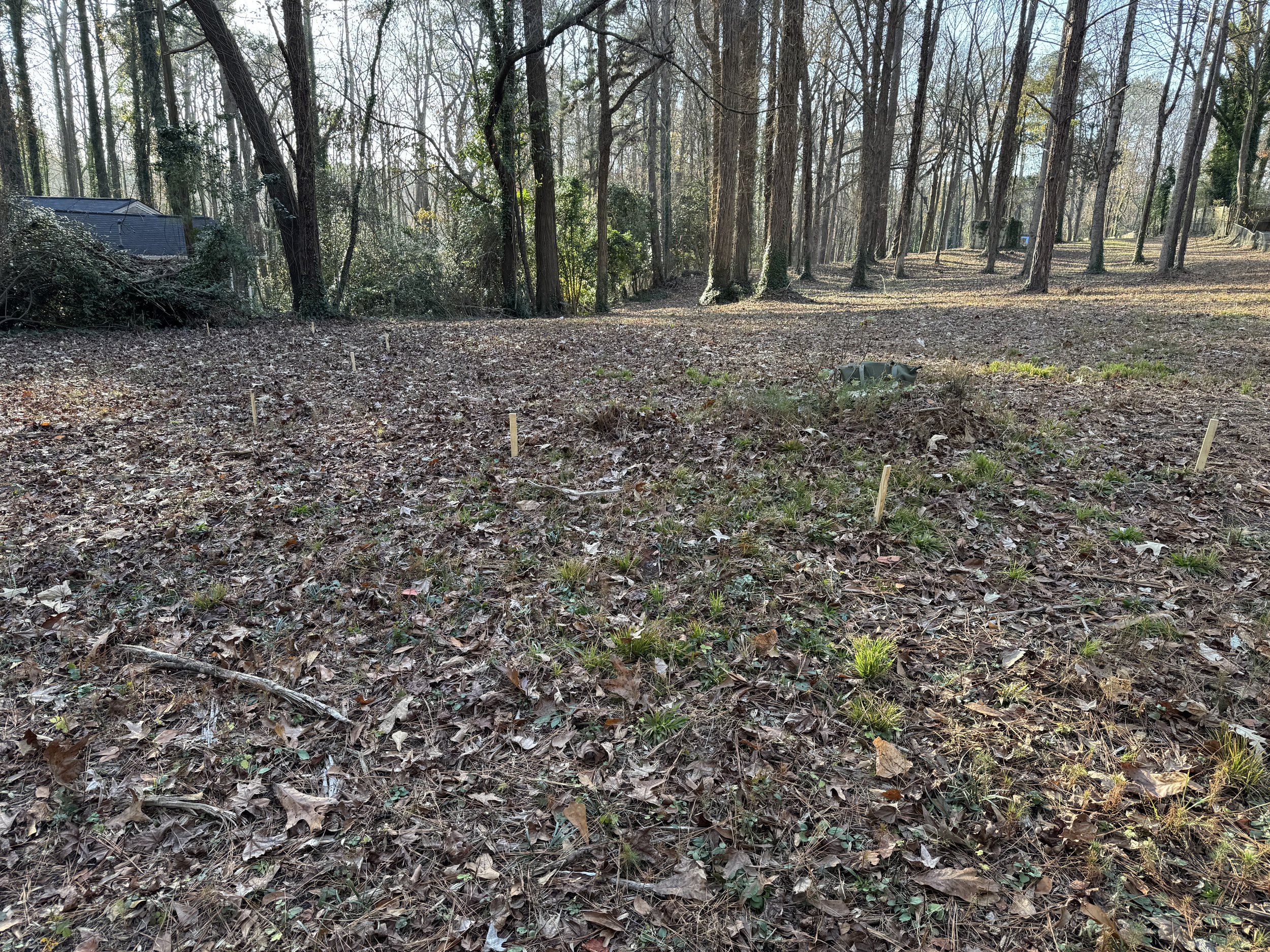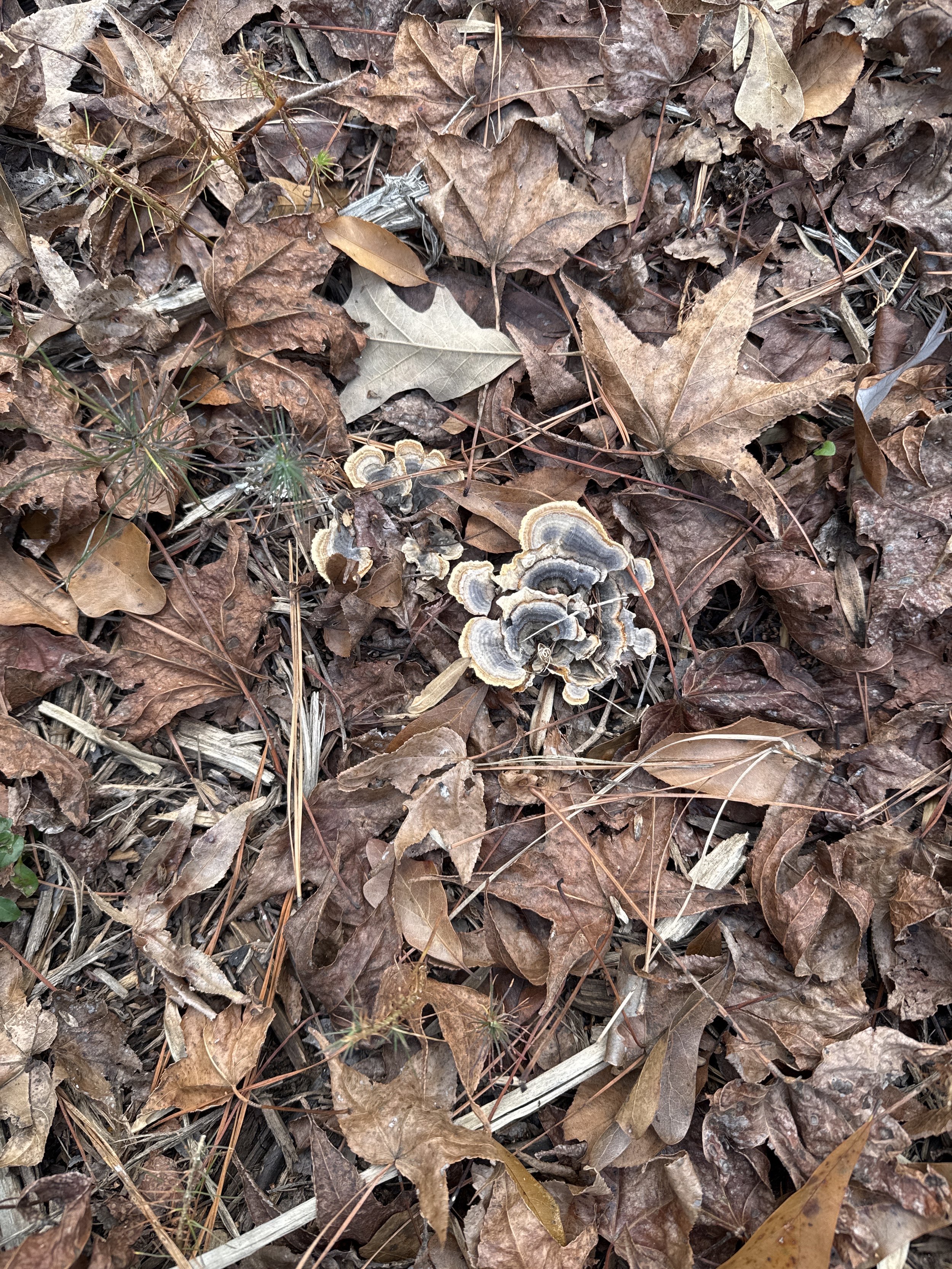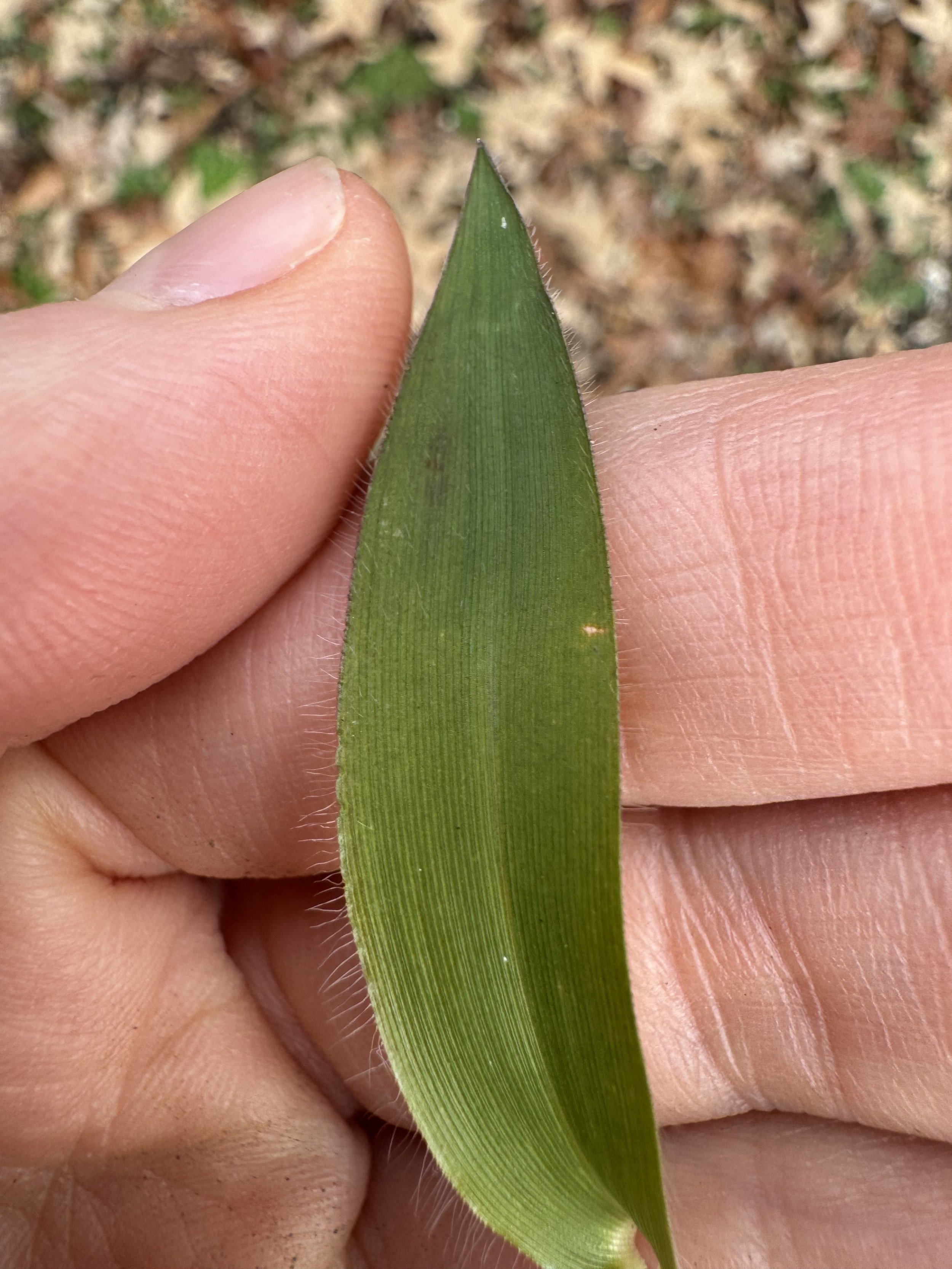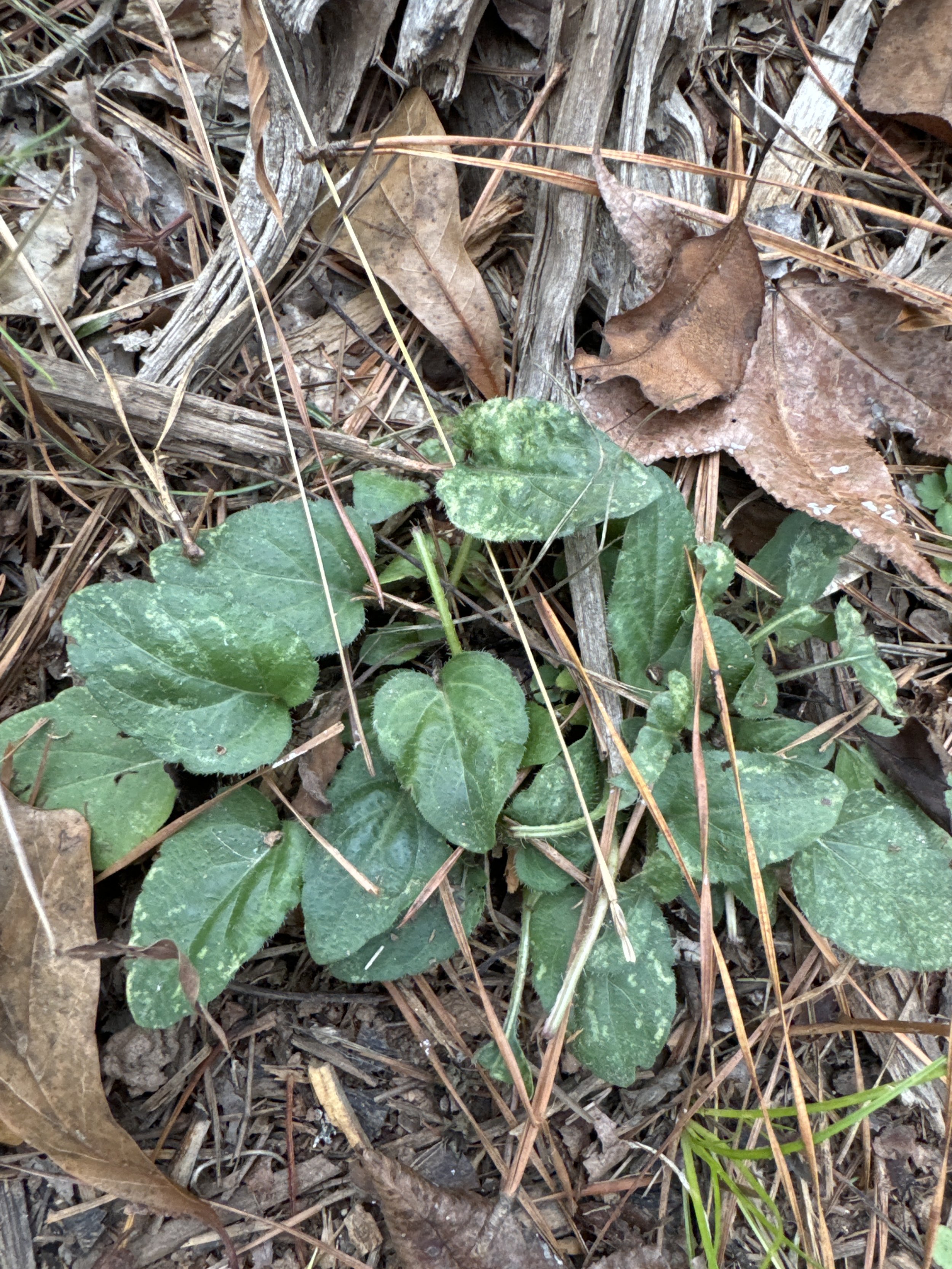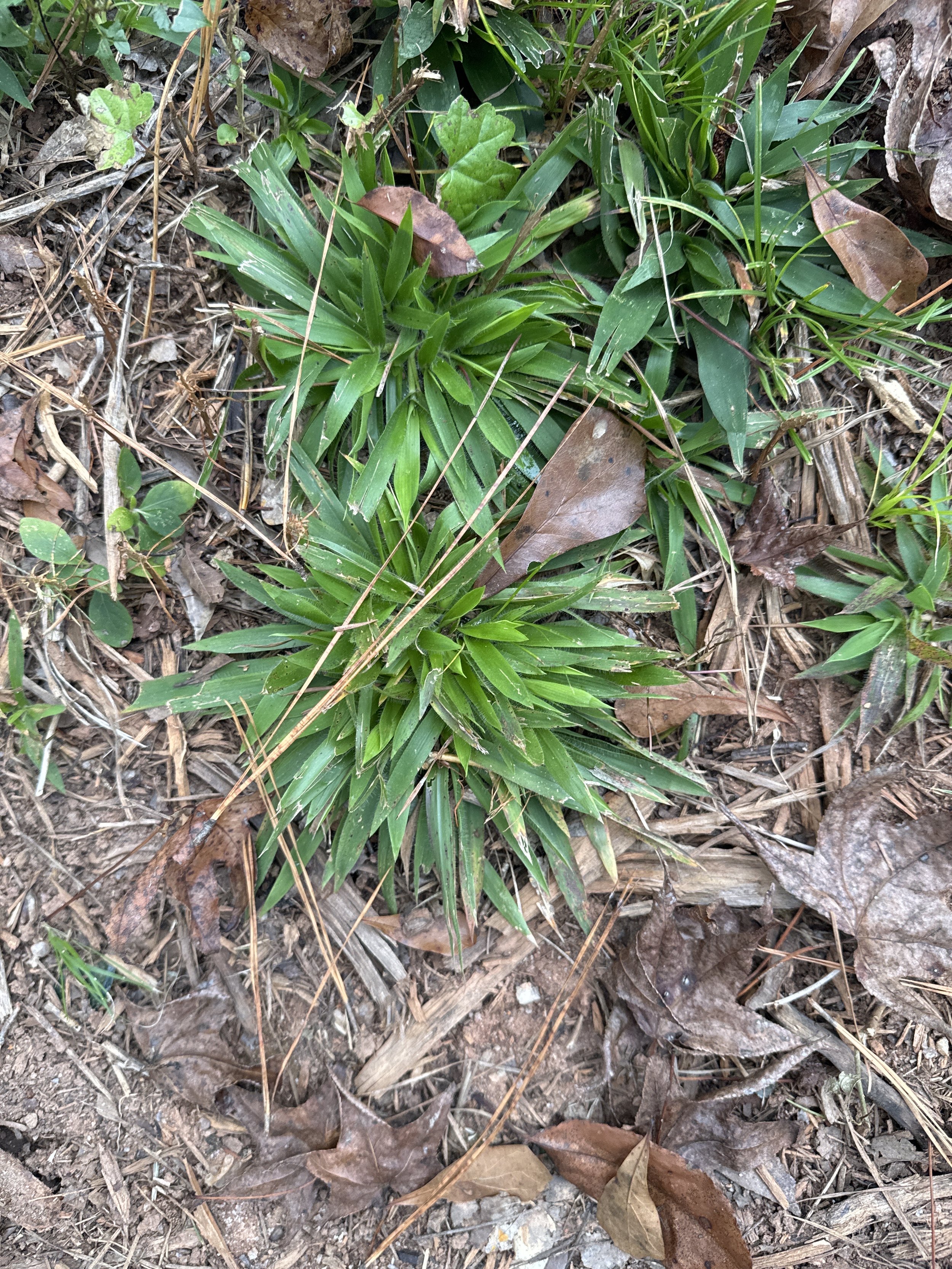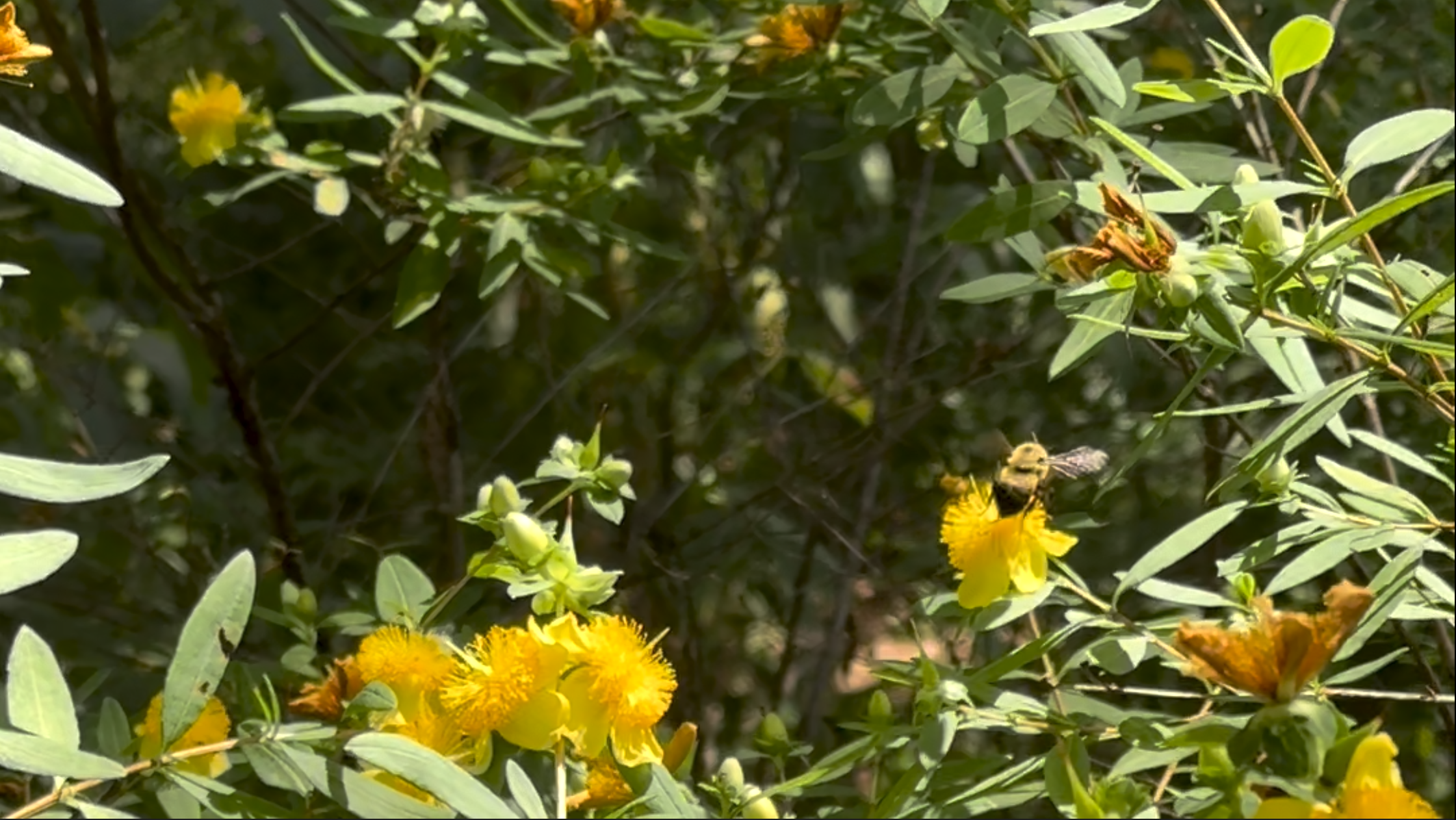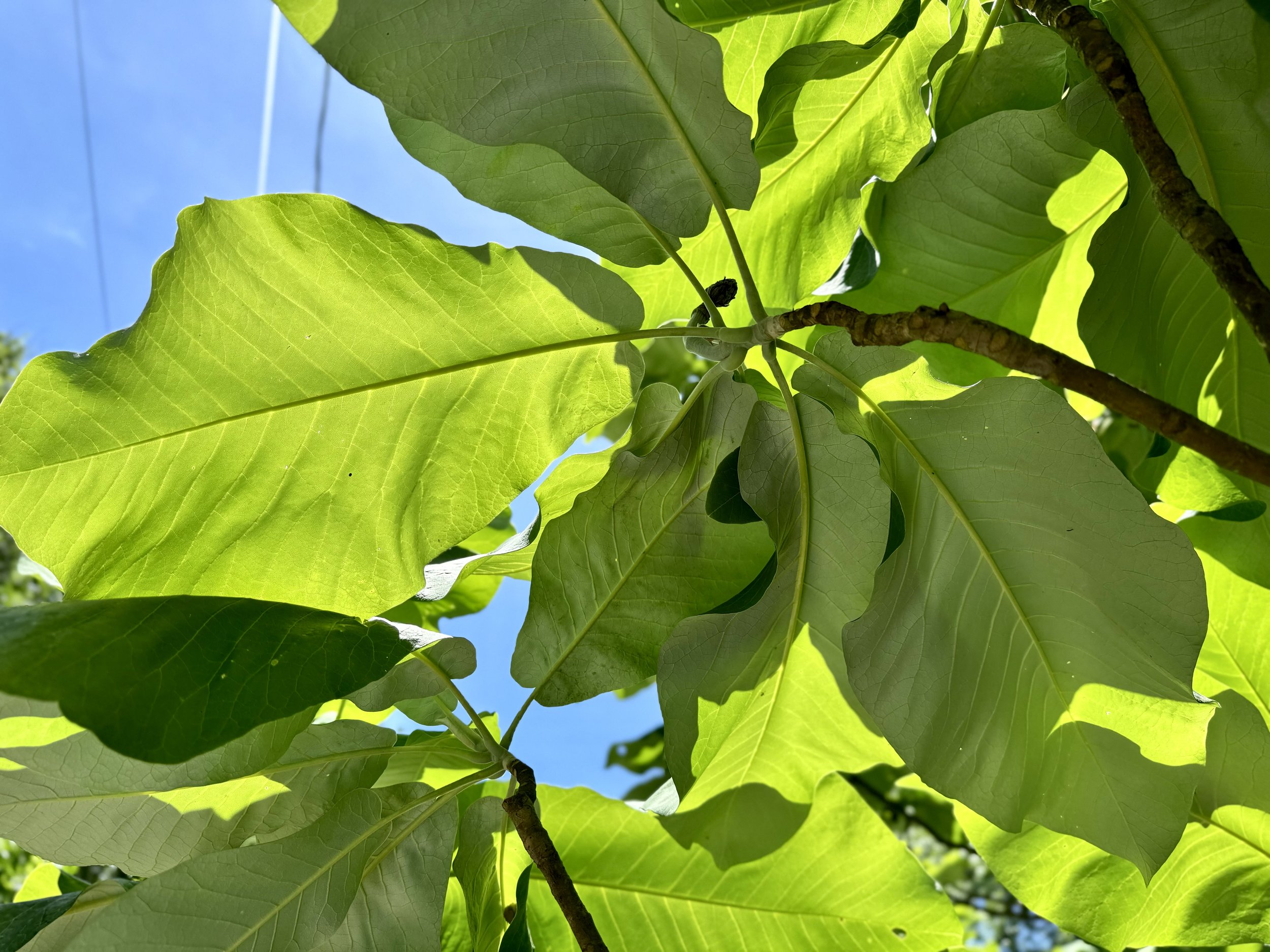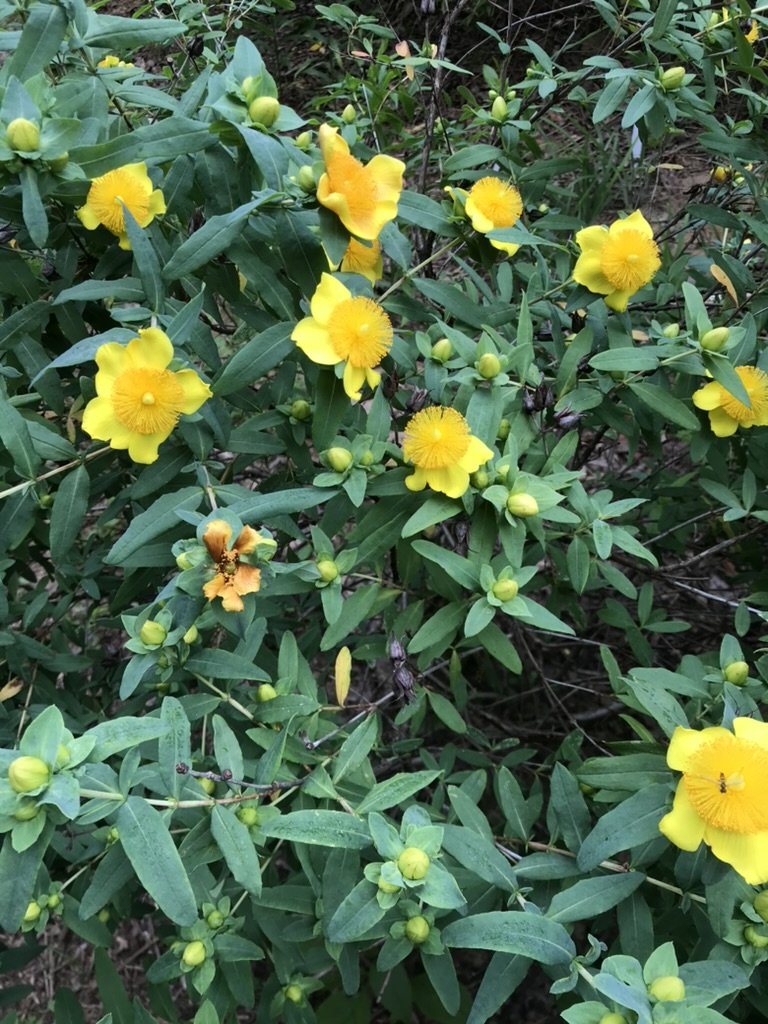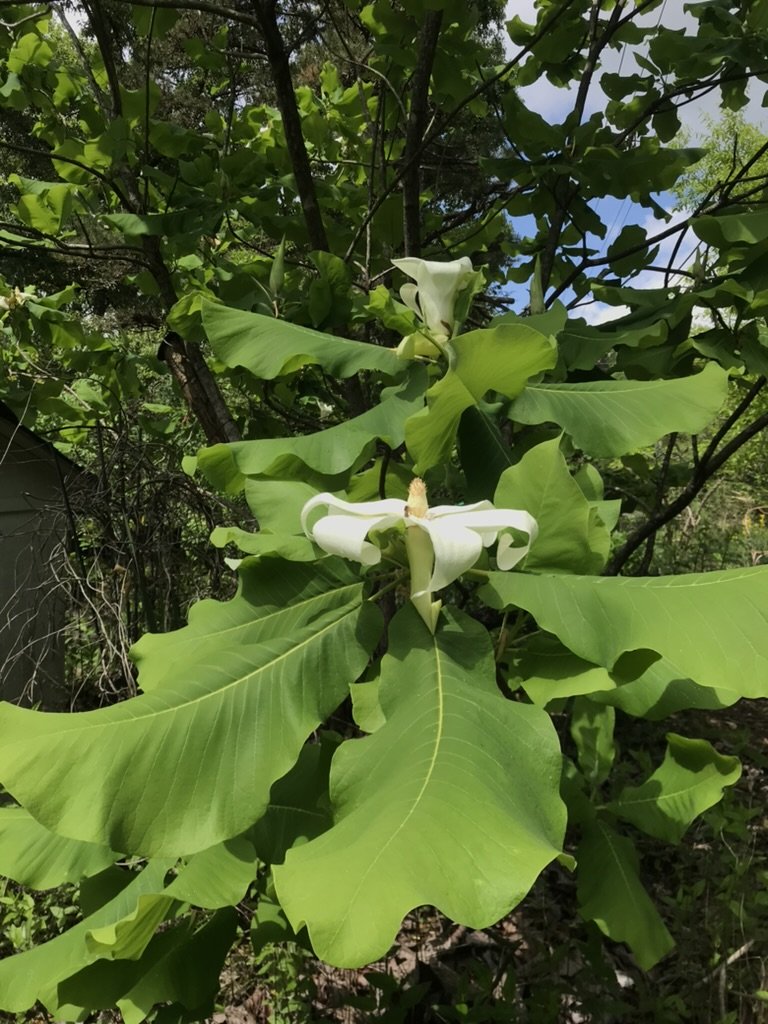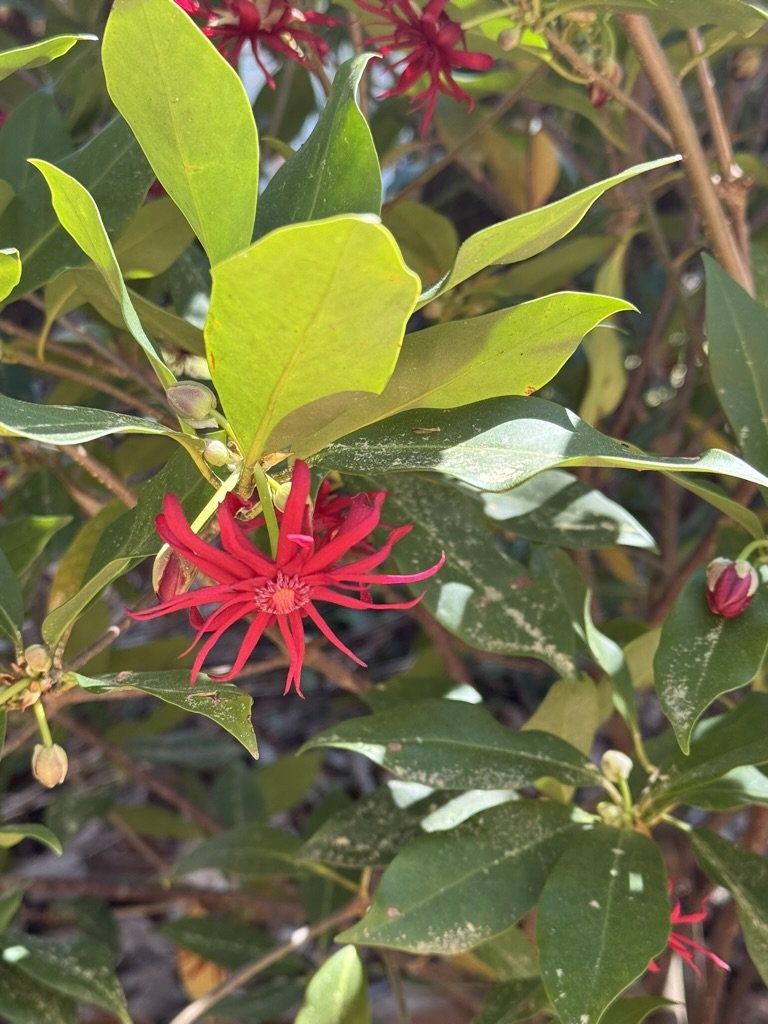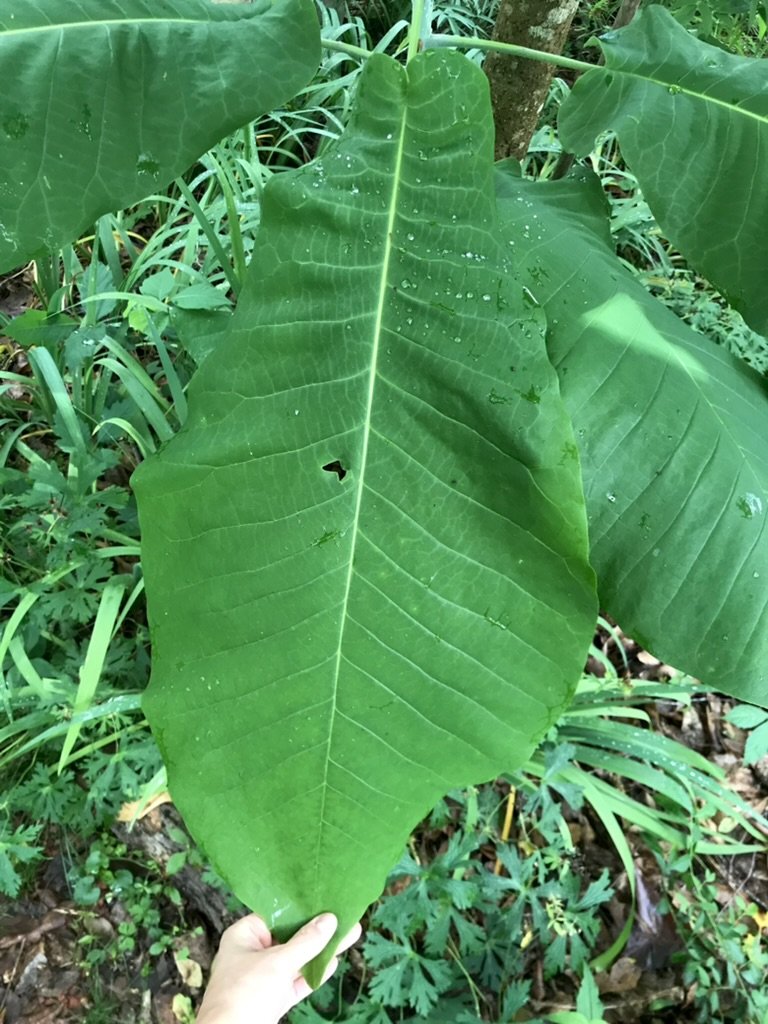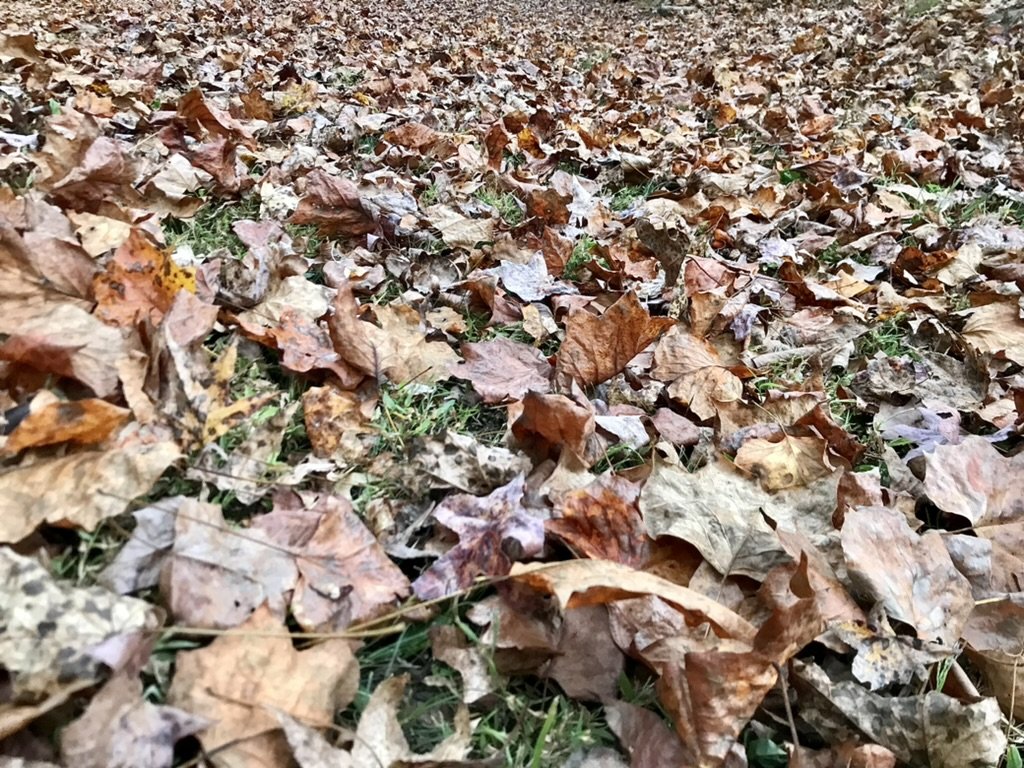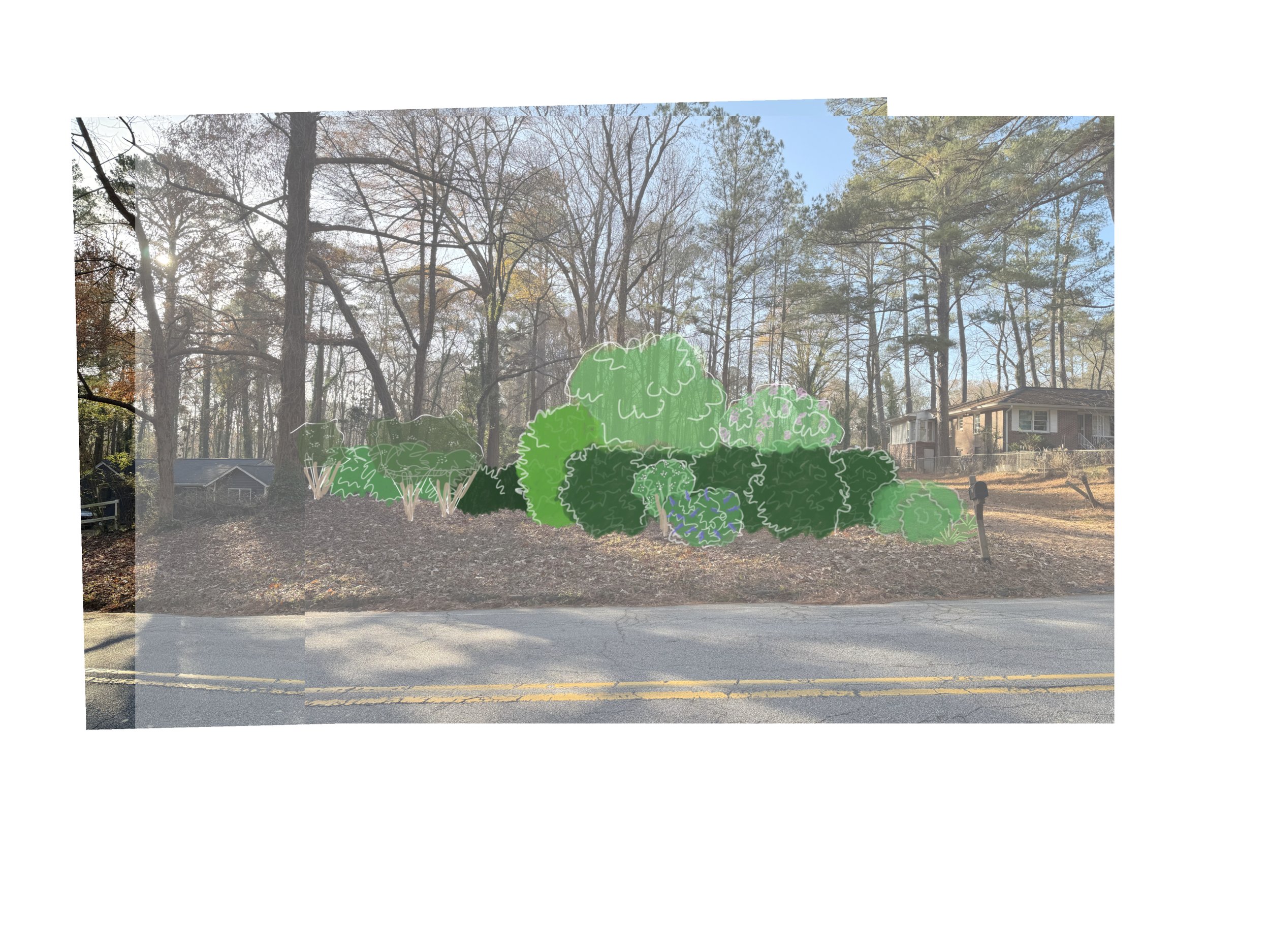A busy street sits at the front of a long stretch of wooded property — both sound and sight need to be buffered. The bones of this entirely native screen are a few different glossy, broadleaf evergreens. Deciduous species are interplanted to provide more food and shelter for wildlife, and dynamic, seasonal interest, plus height. Species are fast to medium growing, and there are a few years between now and when the land will be inhabited. Each species is suited to its place within this area’s range of drier, sunnier conditions and the moisture and rich soil characteristics of the shade of sweetgum and tulip poplar.
Magnolia macrophylla is a nostalgic emblem of home for the people who will live here, and will sit in a sunny, open space between the screen and towering tulip poplars, pines, and sweet gums. Aesculus sylvatica will add height and character behind the screen. Myrica cerifera will grow fast and provide food for birds and potential home for the Red-Banded Hairstreak butterfly. Viburnum berries will feed birds and the plant is a potential host for the Spring Azure butterfly. I don’t know why Amorpha fruticosa is so underutilized in the landscape, but it is gorgeous and interesting looking, and its flowers attract butterflies, bees, and other pollinators. It’s also a host for California and southern dogfaces, Silver-spotted Skipper, Gray hairstreak, and Hoary edge skipper. Hypericum frondosum has cheerful, puffy yellow blooms and blue-tinted foliage. More host plants for lepidoptera species means more food for baby birds and other creatures.
We’ll plant Yucca filamentosa near the driveway, but the remainder of the low-growing perennials toward the street will make themselves known. There is an abundance of existing Prunella vulgaris and some kind of fuzzy Dichanthelium. These will be protected and aggresive invasives will be removed during the growing season. We’ll see what else emerges from the seed bank.
